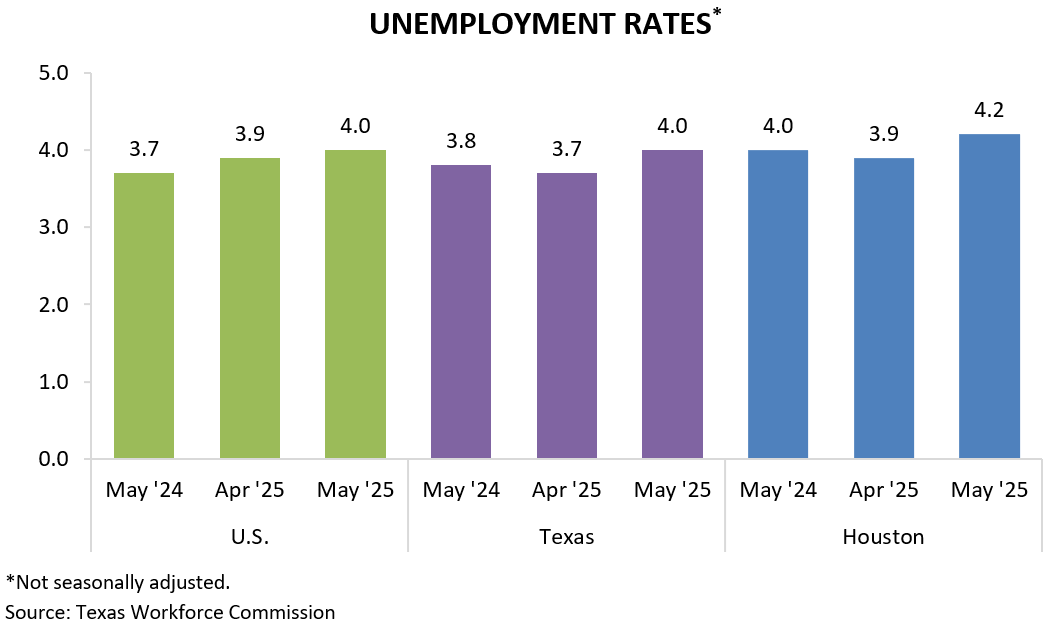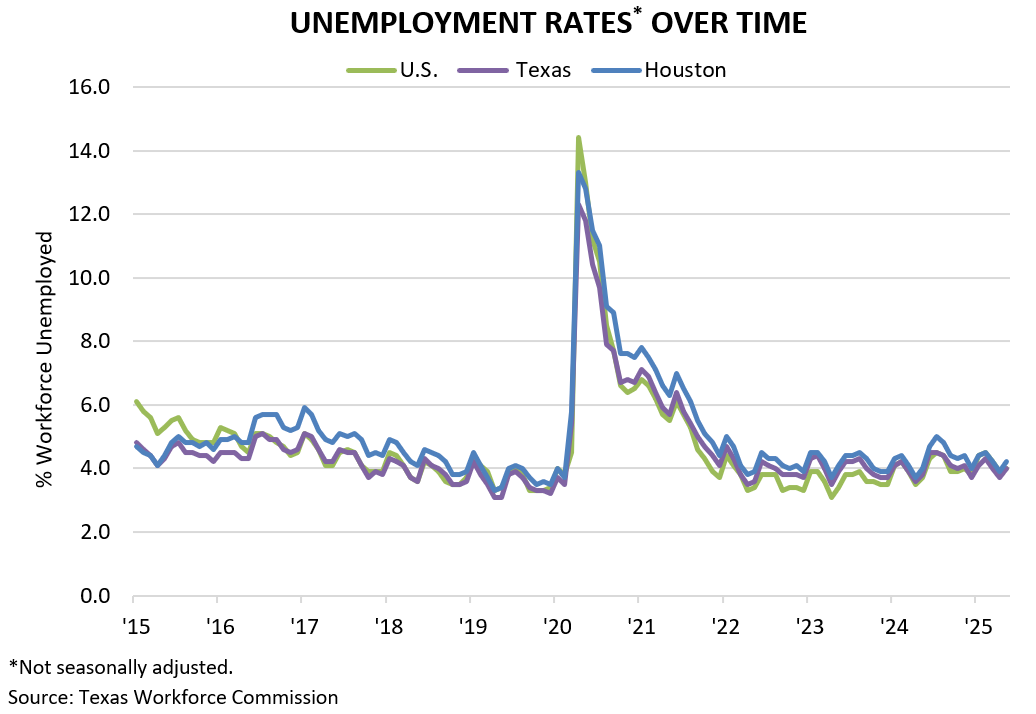Monthly Update: Unemployment
The Partnership sends updates for the most important economic indicators each month. If you would like to opt-in to receive these updates, please click here.
Estimated Reading Time: 2 minutes
Metro Houston’s unemployment rate rose from 3.9 percent in April to 4.2 percent in May, according to Local Area Unemployment Statistics published by the Texas Workforce Commission. Houston’s May number came in slightly higher than the U.S. and Texas rates of 4.0 percent. Unemployment rates are up marginally compared to May of last year across the three areas. Hiring has been slower than usual during the first months of ’25 as employers deal with high economic uncertainty.
Annually, the national unemployment rate ticked up to 4.0 percent from 3.7 in May of last year. The rates for Texas and Houston showed similar increases during the same time. Unemployment still remains far below the high rates experienced during the COVID-19 pandemic.
League City, Friendswood, Sugar Land, Pearland, Conroe, Galveston, and Alvin had lower unemployment rates than the metro area average. Houston and Rosenberg matched the overall region with unemployment rates of 4.2 percent. Baytown, Pasadena, Texas City, La Porte, Lake Jackson, Deer Park, and Missouri City had higher unemployment rates.
Initial claims for unemployment benefits have continued to increase, reaching their highest levels since last summer when the region was recovering from Hurricane Beryl. In the first week of June, the four-week moving average hit 4,771 claims filed. This represents a notable increase over the 3,256 average weekly claims at the start of January.
Prepared by Greater Houston Partnership Research
Colin Baker
Manager of Economic Research
Greater Houston Partnership
bakerc@houston.org
Clara Richardson
Research Analyst
Greater Houston Partnership
crichardson@houston.org




















